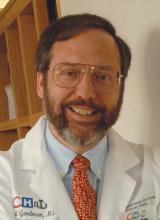Just as with adults, the quality of health care that children receive often depends more on their zip code than their health status.
A new report from the Dartmouth Atlas Project found dramatic variation in outpatient physician services, hospitalizations, common surgical procedures, imaging, and prescriptions for infants and children living in Maine, New Hampshire, and Vermont.
The Dartmouth Atlas Project has issued a series of reports over the past 20 years showing wide geographic variation in the care of elderly adults, but this is the first time that the group has focused on infants and children under age 18 who have either commercial insurance or coverage through their state Medicaid programs.
The researchers focused specifically on Maine, New Hampshire, and Vermont because they are the only states that mandate the collection of insurance claims data from both commercial plans and Medicaid. The study looks at services provided from 2007 through 2010.
The researchers found that there is as much variation in pediatric health care as they found previously in care of the elderly, according to Dr. David C. Goodman, the lead author of the study and a professor of pediatrics at the Geisel School of Medicine at Dartmouth in Hanover, N.H.
"Health care has a general problem, which is reflected in essentially any population that we study," Dr. Goodman said.
The problem is that well-meaning physicians often don’t have the information they need to understand what kind of care they are providing and how it differs from what’s being done by their peers, he said.
While some of the variation detected in the study is explained by socioeconomic differences, most of it reflects distinctive practice styles across the different health care systems in the region, Dr. Goodman explained during a Dec. 11 press conference to release the Dartmouth Atlas findings.
In some cases, the findings show underuse of recommended treatments and services, such as lead screening for the Medicaid population and follow-up visits for children who are taking medications for attention-deficit/hyperactivity disorder (ADHD).
Across the three northern New England states analyzed, nearly 44% of children who were prescribed ADHD medication had a recommended follow-up appointment within 30 days in 2009-2010. But individual regions varied greatly. In Newport, Vt., nearly 70% of children had an initial follow-up, compared with only 35% in Lewiston, Maine.
Common surgical procedures also tended to vary widely based on the individual practice styles of physicians and surgeons, Dr. Goodman said, resulting in both under- and overuse.
For instance, tympanostomy tube insertion procedures for ear infections were performed more than four times as often in Middlebury, Vt., than in Bangor, Maine. In Middlebury, physicians performed 15.2 procedures per 1,000 children, compared with 3.4 procedures per 1,000 children in Bangor.
The report also revealed wide variations in access to care. And the result is that in areas where there were a high number of visits to physician offices, trips to the emergency department (ED) were much less common.
The average annual office visit rate, including visits to primary care and subspecialty offices and clinics, was 2.8 visits per child across the three New England states. But the visit rates varied more than threefold across the different regions.
The annual ED visit rate was 359 per 1,000 children during 2007-2010. Similarly, ED visits varied nearly threefold across the various regions. The common causes for ED visits included upper respiratory infections, minor injuries such as contusions and sprains, otitis media, and open wounds.
Dr. Goodman said he hopes that physicians will see the new data and become curious about the type of care they are providing. Physicians and hospitals can be "powerful change agents" when they start asking themselves what is driving their care practices, he said.
The Dartmouth Atlas Project, which is located at the Dartmouth Institute for Health Policy and Clinical Practice, is principally funded by the Robert Wood Johnson Foundation, with support from a consortium of funders. The new pediatric report was supported by a grant from the Charles H. Hood Foundation.


